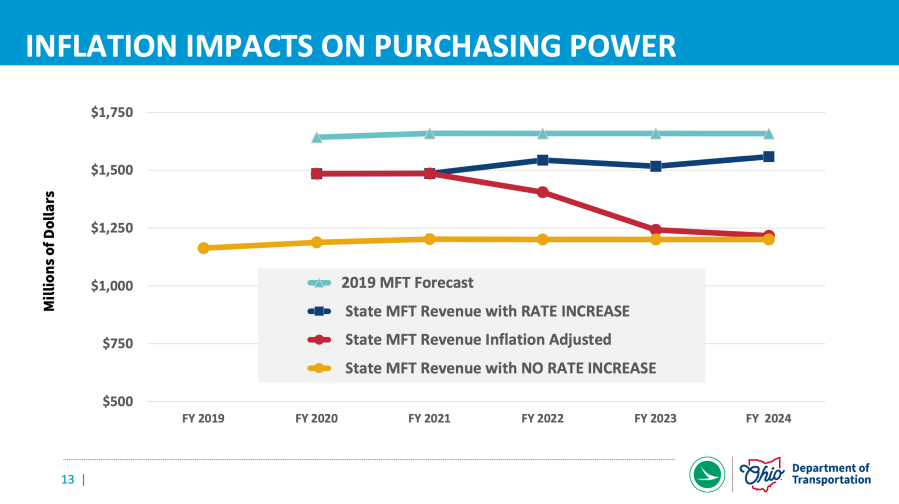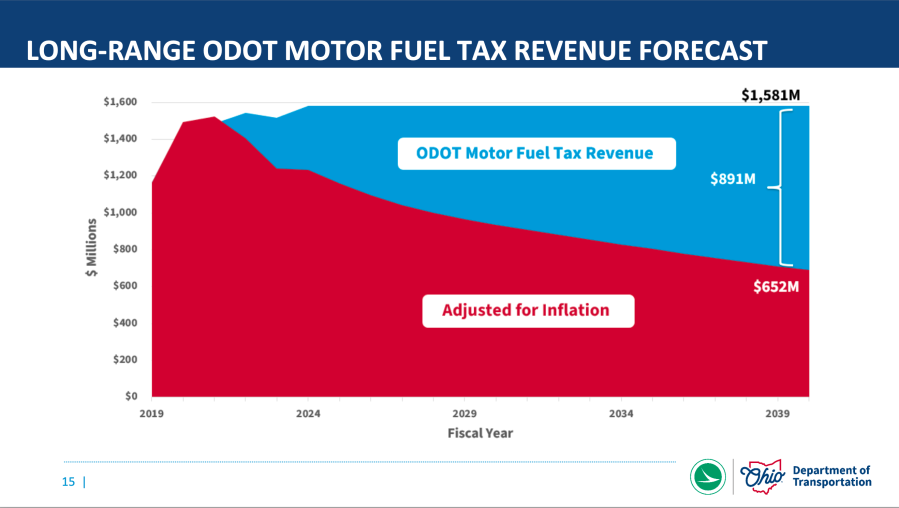COLUMBUS, Ohio (WCMH) — Billions of dollars are spent each year making Ohio’s roads and highways safe, but officials are warning that the money may not go as far this budget cycle.
Every two years, lawmakers pass a transportation budget, spending billions of dollars on those projects. Some of them will be funded, without fail.
“Transportation policy is important policy,” Sen. Kent Smith (D-Euclid) said. “We want to get people to work. We want to make sure that people who work on roads are safe and people who travel on roads are safe.”
Some projects are secure in their funding, but the Ohio Department of Transportation (ODOT) worries that money from the state’s gas tax may not go as far as it once did.
“Since 2019, construction costs have risen 30%. And the fiscal outlook shows that construction inflation is continuing to erode the purchasing power of our state motor vehicle fuel revenue which makes it harder to fund long-term transportation infrastructure needs,” Director of ODOT Pamela Boratyn said.
Boratyn said it is a combination of inflation and flattening consumption as cars become more fuel efficient and electric vehicles more popular.
“Many states are facing long-term budget challenges that need to be addressed by policy makers,” she said.
Boratyn presented a graph that showed after inflation there is an $891 million difference in spending power.

And another graph shows, in red, how revenue decreases when adjusted for inflation, if the gas tax remains the same rate.

According to ODOT, Ohio spends more money than any other state per capita on road safety. But Ohio already has the 13th highest gas tax in the nation, at 38.5 cents per gallon.
“In my time here, I’ve had to vote for two gas increases,” chair of the Ohio Senate Finance Committee Tom Patton (R-Strongsville) said. “And like I told my voters back home; I said all five of my daughters had to pay that gas tax increase. I don’t get a special card.”
Patton said he sees the need for projects, like creating more space for truck drivers to park overnight.
“I drive home at night,” Patton said. “So, I drive by those road stops. You see the trucks packed up and down the ramps. I recognize the need.”
But Patton questions whether the responsibility is on the state or on truck companies to cough up the money for those projects.
“The value of UPS was $151 billion. FedEx was like $108 billion,” he said. “Let them set up, you know, 40 acres and put in some electricity, put in some showers.”
Patton said there are a large number of “unfunded highway projects” that create fear in asking for another gas tax increase. But he said right now, they are going to try to do more with less.
“We need it for safety in the roads, but there’s not a mood to do another gas tax increase. So, we’ll have to do more with what we have now,” he said. “$385 million is going to be spent on these ancillary things, projects that could pay for a few major capital projects. You know, I just think that the committee has to take a look at it and let the committee decide in the Senate decide where we land in a good spot.”
Chair of the Ohio House Finance Committee Brian Stewart (R-Ashville) said the governor did not propose a gas tax increase and the House will not be adding one. He said he would be surprised if the Senate did, and added that he does not think there is “any appetite to vote on a gas tax increase.”
Democrats, like Smith, agree the state does not need to do another gas tax increase right now, but worry about the future of federal funding.
“The wild card in all of this is — and this is especially true with transportation projects — is as D.C. continues to unravel, as our federal partners in transportation projects continue to just be very random and sloppy with some of the budget decisions they’re making,” Smith said. “Ohio might have to increase some revenue if Washington, D.C., decides to shortchange the seventh most populated state in the country.”
The transportation budget still has a long way to go before it is finished. It is still in the House and needs to be voted out from that chamber before work begins in the Senate.










